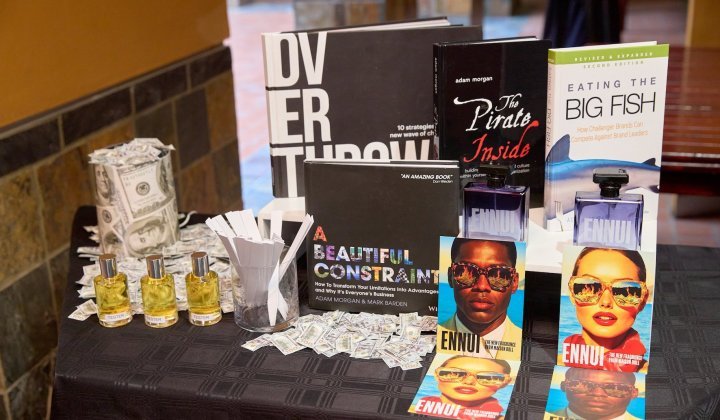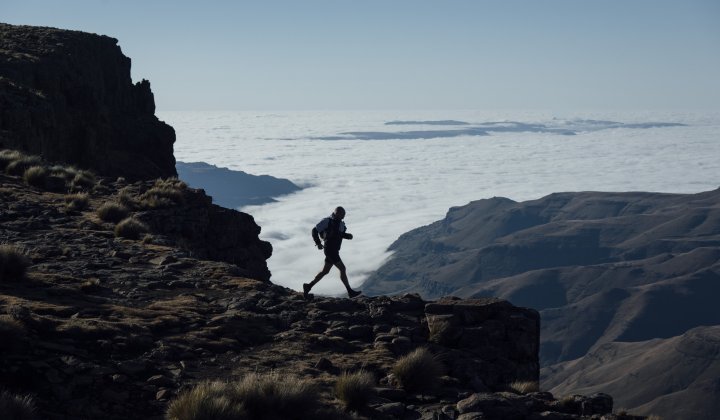In March 2022, Bonhams, a well-established auctioneer of fine art and antiques, became the first in the world to offer artwork by Nelson Mandela as NFTs. Within a 12-hour window of opportunity, the London-based company offered six pieces by the former president.
Named My Robben Island, the series consisted of five artworks and a handwritten note. Each artwork was sold for US$699, with the full set going for US$3,495.
In an announcement issued by Bonhams, Mandela’s oldest daughter, Makaziwe Mandela, expressed pride in being involved in this contemporary offering of her father’s creative output. “NFTs are an exciting way to democratise art, and I’m delighted to share my father’s legacy in new forms.”
This modern iteration of art that Mandela created decades ago is enabled by a technological innovation called a non-fungible token (NFT). An NFT is a digital asset that can represent a real-world object such as a painting or sculpture. Often, however, NFTs are purely virtual. Each NFT is a unit of data stored on a tamper-proof digital ledger called a blockchain. This ledger contains salient information about the asset and helps confirm the authenticity and provenance of a piece.
The technology behind NFTs has mostly been applied to creative endeavours such as art, photos, audio and video. As a result, it has disrupted how creators create, with a growing number working solely on virtual projects. It’s also disrupted how money is made.
Catching up with technology
Bonhams’ decision to offer Mandela’s work in a digital format meant that many copies of each picture could be sold. Of the five Madiba drawings, The Harbour registered the fewest editions at 21, while 57 editions of a piece called The Window were sold. Bonhams has closed its sale, but all the pieces are now available on secondary marketplaces. They are all retailing for higher than the original price of US$699. At one time, The Lighthouse had an asking price of US$2,500, while The Harbour registered a listing for US$15,000. If it sells at this price, The Harbour would have earned more than 2,000% profit!
These astronomical figures are not rare when it comes to NFT transactions. Over the past decade, the industry has been boosted by celebrity participation, such as sporting icon, Shaquille O’Neal, who raised US$2 million for charity through the sale of unique NFTs. Co-founder and former CEO of Twitter, Jack Dorsey, sold his first-ever tweet as an NFT for US$2.9 million dollars, while NSA whistleblower, Edward Snowden, sold an NFT that showed a digitally composed image of his face for US$5.4 million.
Global brands are also giving legitimacy to the once-fringe sector. For example, sportswear company, Nike, has patented Cryptokick, which is a system that uses NFTs to verify the authenticity of physical sneakers and give a virtual version of the shoe to the buyer.
Rather than be left behind by this disruption, art galleries are choosing to embrace and leverage it.
In South Africa, WORLDART, a Cape Town-based gallery, was the first local institution to offer an NFT artwork. This history-making item was a GIF called Da bomb by internationally renowned artist, Norman O’Flynn. The NFT was accompanied by the original portrait on plexiglass. Gallery owner, Charl Bezuidenhout, says it was a milestone transaction for his business, for O’Flynn, who will earn royalties whenever his artwork is resold, and for the buyer. “Acquiring this artwork by Norman O’Flynn presents a unique opportunity for collectors to own an entry in the blockchain itself.”
Da bomb went on auction in April 2021 and sold in Ethereum for an equivalent of US$3,500. Bezuidenhout says it was an insightful process for the gallery. “We learnt a lot about the process and found the biggest challenge to be the fact that bidding on these platforms is still quite complicated for newcomers. But it's something we expect to get easier as more people set themselves up with crypto wallets.”
Globally, the NFT industry is growing as companies find applications for NFTs to supplement their primary product offering. The film production company, Warner Bros., has, for example, released a collection of 91,000 limited-edition NFTs from their movie Space Jam: A New Legacy. The NFTs included the characters of Bugs Bunny and Tweety, and the pic’s star, basketball player LeBron James. They ranged in price from US$3 to upwards of US$10,000.
New solutions required
Most NFT artworks are not reliant on the appraisal and approval of celebrities or art galleries for status. This allows unknown artists to sell their work for prices that buyers are willing to pay rather than the amount deemed fitting by a curator. This decentralisation and democratisation serve creators well.
It does, however, pose limitations for buyers who can be easily priced out of the purchasing market. Having conventional market economics come into play in this way means that NFTs are susceptible to becoming the preserve of the wealthy few.
With buying and selling taking place only online, NFTs allow for complete anonymity. This can protect artists from gender, race, age and other prejudices, but it also means that individuals can create online pseudonyms that are near impossible to crack or uncover. As a result, digital assets are left vulnerable to price-fixing, stockpiling, tax evasion and potentially even money laundering.
NFTs do also have a limitation unique to their technological concept. When individuals buy an NFT, they’re not purchasing the tangible artwork. None of the people who bought a Mandela artwork received a canvas that they could hang in their home or office. Instead, their acquisition was a link to a website with a picture of the piece and information about its history, such as previous owners and past selling prices. If the businesses behind these websites and marketplaces ever fold, the likelihood is that the domain names could also disappear, making it challenging to buy, sell or verify any artwork listed on those platforms.
Dan Olson, a documentarian who offers media and cultural analysis on his YouTube channel, Folding Ideas, sees much cause for concern about NFTs. With millions of views recorded since its release in January 2022, one of his most popular videos is Line Goes Up - The Problem With NFTs. He shares issues with the technology, including security gaps of blockchains and the self-serving hype of NFTs. Olson describes cryptocurrency and NFTs as a ‘Greater Fool’ scam. "The whole thing operates by buying worthless assets believing that you will later be able to sell them to a bigger fool," he says in his video. Early adopters benefit the most, and consequently, to maximise their benefits, they try to hype up NFTs. "None of this is about the art at all, but about the speculative value – not what it's worth to you, but what it will potentially be worth in the future to someone else," he posits. "It's not a market; it's a casino, gambling on the receipt for an image or video that's otherwise infinitely digitally replicable. The thing itself is immaterial as long as it can make a line go up."
From artwork to event tickets to experiences, line graphs associated with the NFT industry are certainly heading upward. New ways of using NFTs have boosted the industry, which according to a blockchain data company, Chainalysis, reached an unprecedented figure of US$41 billion in value by the end of 2021.
This is likely to increase still further throughout 2022. Time will tell whether the cartoon apes, video clips and GIFs that are popular in NFT art will continue to garner interest or if they will one day be rendered valueless by a newer and more virtually dazzling innovation.
Memorable moments in the early NFT industry
May 2014: Quantum, the first known version of NFT, was called a monetised graphic. It was created by Kevin McCoy and Anil Das and was sold for US$4 during a live demonstration at a conference in New York City.
October 2015: Minted and demonstrated at DEVCON 1 in London, Etheria is billed as the first NFT project. It is a 33x33 map with 457 tiles representing virtual land that can be bought, sold and built on. Etheria’s name likely reflects that it was created three months after the launch of the Ethereum blockchain.
May 2017: Featuring multiple sets of 30 unique cards, Curio Cards were developed by three artists. They profile artwork of 7 different creators and are considered the first NFT collection on the Ethereum blockchain.
January 2018: A metaverse world called Decentraland was born. The 3D virtual reality concept is the first-ever virtual world owned by its users. It allows for activities such as playing games and purchasing and developing land.
Game of numbers
There are big bitcoins at play for NFT artists and collectors. Here are the top five highest selling NFT works.
US$91.8 million: Merge is a single digital artwork that was sold as separate pieces or tokens. Each one cost US$575. Available only between 2 and 4 December 2021, sales of Merge established artist, Pak, as the highest-selling NFT creator.
US$69.3 million: Everydays: the First 5000 Days is a digital work of art created by Mike Winkelmann, aka Beeple. This digital mosaic of 5,000 images was the first NFT artwork listed by the renowned auction house, Christie’s. It was purchased by Metapurse, a group investing in digital art.
US$52.8 million: A joint creation with WikiLeaks founder, Julian Assange, and digital artist, Pak, Clock displays a digital counter of the days Assange has spent in prison. It was bought by a blockchain-based activist collective to support his legal bills.
US$28.9 million: HUMAN ONE is a 3D video sculpture by Beeple. It was auctioned at Christie's with a corresponding dynamic NFT. The auction lasted just over three minutes, with the work secured by an online bidder in Switzerland.
US$23.7 million: CryptoPunk #5822 is by an unknown creator. It first sold for US$1,641, with that buyer holding onto the piece for nearly five years. The NFT was then purchased at the new record-breaking price by Deepak Thapliyal, the CEO of the blockchain company, Chain.




